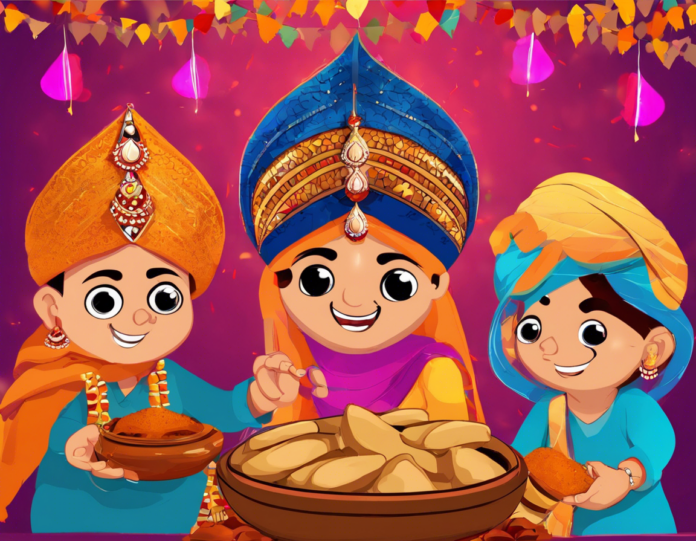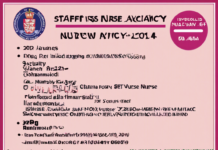Happy Lohri, also known as the Harvest Festival, is a popular Punjabi festival that celebrates the end of winter and the arrival of longer days. This vibrant and joyous festival is celebrated primarily by Punjabis and Sikhs around the world. It is a time for families and communities to come together, dance around bonfires, feast on traditional delicacies, and exchange heartfelt greetings and blessings. In this article, we will delve into the significance of Lohri, its customs and traditions, popular rituals, and how it is celebrated in different parts of the world.
Significance of Lohri
Lohri holds immense cultural and historical significance for Punjabis. The festival marks the end of the winter solstice, which is the shortest day and longest night of the year. As the sun starts its journey northward, the days begin to lengthen, symbolizing the end of winter and the onset of spring. It is believed that Lohri is celebrated on the last day of the Punjabi month of Paush, and the next day is known as Maghi, which marks the beginning of the month of Maagh. In Indian astrology, this period is considered highly auspicious and marks the transition of the sun into the Makar Rashi (Capricorn zodiac sign).
Customs and Traditions
Lighting of Bonfire
One of the central traditions of Lohri is the lighting of bonfires. Families gather around a bonfire in the evening, throw til (sesame seeds), gajak (jaggery), peanuts, and popcorn into the fire, and perform a parikrama (circumambulation) around it. This ritual symbolizes the homage to Agni, the fire god, and marks the offering of gratitude for a bountiful harvest.
Dancing and Singing
Dancing and singing traditional folk songs are integral parts of Lohri celebrations. People perform the energetic and lively Bhangra and Gidda dances around the bonfire. They sing popular Lohri songs like “Sundar Mundariye,” “Ho Jayegi Balle Balle,” and “Aaju Dilla Nu.” These songs are usually sung in a group with synchronized dance steps, fostering a sense of unity, joy, and togetherness.
Feasting
Lohri is incomplete without a lavish feast of traditional Punjabi dishes. Sarson da saag and makki di roti, til (sesame) Ladoo, gur (jaggery), peanuts, rewri, and popcorn are some of the must-have delicacies during Lohri. These dishes are not only delicious but also hold cultural significance, reflecting the agrarian roots of the festival.
Exchanging Gifts and Greetings
Another common tradition during Lohri is the exchange of gifts and greetings among family members, friends, and neighbors. Elders usually give money or sweets to children as a token of blessings and good wishes. It is also a time for people to visit each other’s homes, seek blessings from the elderly, and strengthen social bonds.
How Lohri is Celebrated Around the World
While Lohri is primarily a North Indian and Punjabi festival, its popularity has transcended regional boundaries, and it is now celebrated with enthusiasm in various parts of the world. In Punjab, India, people decorate their homes, wear colorful traditional attire, and participate in community bonfire gatherings. In other parts of India, like Haryana, Himachal Pradesh, and Delhi, Lohri is celebrated with similar fervor and zeal.
In countries like the United States, Canada, the United Kingdom, and Australia, where there are significant Punjabi and Sikh populations, Lohri is celebrated with traditional rituals, bonfires, music, dance, and authentic Punjabi cuisine. Community associations and Gurudwaras organize Lohri events, bringing together people from diverse backgrounds to partake in the festive spirit.
Frequently Asked Questions (FAQs) about Lohri
1. What is the origin of the Lohri festival?
Lohri has its roots in ancient folklore and has been celebrated for centuries as a way to mark the end of winter and welcome the longer days and warmer weather of spring.
2. Why is the bonfire an important part of Lohri celebrations?
The bonfire symbolizes the passing of winter, the return of longer days, and the power of the sun. It is also a way to offer thanks to Agni, the fire god, for his blessings.
3. What are some traditional foods eaten during Lohri?
Sarson da saag and makki di roti (mustard greens and cornbread), til (sesame) ladoo, gur (jaggery), peanuts, rewri, and popcorn are some of the traditional foods enjoyed during Lohri.
4. How is Lohri celebrated in modern times?
In addition to traditional rituals like lighting bonfires, dancing, and feasting, modern Lohri celebrations may also include music concerts, dance performances, and other cultural events to showcase Punjabi heritage.
5. Is Lohri a religious festival?
While Lohri is deeply rooted in Punjabi culture and folklore, it is not a religious festival. People of all faiths in Punjab and beyond come together to celebrate Lohri.
6. What is the significance of singing traditional folk songs during Lohri?
Singing traditional folk songs like Boliyan and Jhumar during Lohri not only adds to the festive atmosphere but also helps pass down cultural heritage from one generation to the next.
7. Are there any specific traditions associated with Lohri for newlyweds or newborn babies?
Newlyweds and newborn babies are often showered with special blessings, gifts, and traditional sweets during Lohri as a way to celebrate new beginnings and auspicious occasions.
8. How can people who are not from Punjab participate in Lohri celebrations?
Non-Punjabis can participate in Lohri celebrations by learning about the traditions, joining in the dancing and singing, trying traditional foods, and embracing the spirit of joy and goodwill that defines the festival.
9. Are there any regional variations in how Lohri is celebrated?
While the essence of Lohri remains the same, there may be slight variations in how it is celebrated in different regions, with unique customs, dishes, and songs that reflect local traditions and influences.
10. How can Lohri be made more eco-friendly and sustainable?
To make Lohri celebrations more eco-friendly, one can opt for eco-friendly decorations, use organic materials in the bonfire, avoid plastic or non-biodegradable items, and promote recycling and waste reduction practices.
In conclusion, Lohri is not just a festival but a celebration of life, prosperity, and unity. It brings people together, transcending barriers of age, religion, and culture. By embracing the traditions and customs of Lohri, we can cherish our roots, strengthen our bonds with loved ones, and welcome the blessings of a new season with joy and gratitude.









